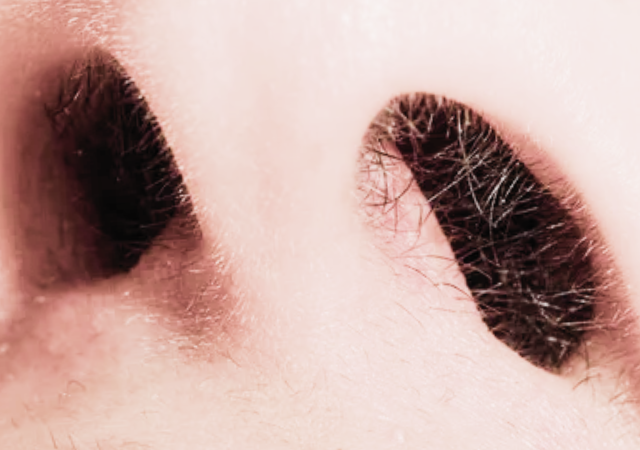Is It Embarrassing To Have Long Nose Hairs?
Introduction
The Function of Nose Hairs

Nose hairs serve a vital role in maintaining our respiratory health. Their primary function is to act as a natural filter for the air we breathe. As we inhale, these hairs trap airborne particles, dust, and bacteria, preventing them from reaching our lungs. The intricate network of nose hairs acts as a first line of defense, contributing significantly to our body’s immune system. Moreover, these hairs also play a role in moisturizing the nasal passages, preventing them from drying out and aiding in the overall health of the respiratory system.
Common Concerns About Nose Hairs
Despite their functional significance, individuals often express concerns about the length and visibility of nose hairs. In a society that places a premium on certain beauty standards, long nose hairs can sometimes be perceived as unkempt or socially undesirable. The pressure to conform to these expectations can lead to discomfort and embarrassment for those with more prominent nasal hair.
The Embarrassment Factor
The embarrassment associated with long nose hairs is, to a large extent, shaped by cultural and societal expectations. In many cultures, there exists an unspoken rule about what constitutes acceptable personal grooming, and deviating from these norms can result in feelings of embarrassment. Media portrayal of idealized beauty often contributes to these perceptions, with images of perfectly groomed individuals reinforcing the notion that certain bodily features, like long nose hairs, are undesirable.
Personal experiences and anecdotes also play a role in shaping individual perceptions of embarrassment. Teasing or negative comments from peers during adolescence, a formative period for self-image, can leave lasting impressions. Consequently, individuals may carry these insecurities into adulthood, contributing to a reluctance to embrace their natural features.
The Health Perspective
While concerns about grooming are valid, it is essential to consider the potential risks associated with excessive nose hair trimming. Nose hairs, when appropriately maintained, act as a protective barrier, preventing harmful particles from entering the respiratory system. Excessive removal of nose hairs can compromise this defense mechanism, potentially leading to increased susceptibility to respiratory infections and allergies.
Maintaining a balance between grooming and health is crucial. Regular trimming of excessively long nose hairs can be a part of a healthy grooming routine, but it is essential to approach it with caution. Consulting with healthcare professionals can provide guidance on safe grooming practices that maintain the protective functions of nose hairs while addressing aesthetic concerns.
Grooming Tips and Techniques
For those concerned about the appearance of long nose hairs, various safe and effective grooming methods are available. Trimming nose hairs with small, rounded-tip scissors or using specialized trimmers designed for nasal hair can help maintain a tidy appearance without compromising the protective functions of the hairs. The key is to trim with care, avoiding excessive removal that could lead to unintended health consequences.
The frequency of nose hair maintenance is subjective and may vary from person to person. Regular checks in front of a well-lit mirror can help individuals gauge when trimming is necessary. Understanding that grooming practices are personal and diverse can alleviate the pressure to conform to rigid societal standards.
Overcoming Embarrassment
Overcoming the embarrassment associated with long nose hairs requires a shift in perspective. Embracing natural body features and challenging societal expectations are crucial steps toward fostering self-acceptance. While societal norms may perpetuate certain beauty ideals, recognizing the diversity of human bodies and features is essential for creating a more inclusive and accepting environment.
Building self-confidence plays a pivotal role in overcoming embarrassment. Accepting that everyone has unique features and that perfection is an unrealistic standard can empower individuals to embrace their natural selves. Education about the functions of nose hairs and their role in maintaining respiratory health can also contribute to dispelling myths and reducing the stigma surrounding them.
Conclusion
In conclusion, the question of whether it is embarrassing to have long nose hairs is deeply intertwined with cultural, societal, and personal perspectives. While societal norms and media portrayals may influence our perceptions, it is essential to appreciate the functional significance of nose hairs in maintaining respiratory health. Striking a balance between grooming practices and health considerations is crucial, and individuals should be encouraged to embrace their natural features while navigating societal expectations. Ultimately, the journey toward self-acceptance involves challenging preconceived notions, fostering confidence, and celebrating the uniqueness of every individual.

My name is Rohit Vagh and I’m a content writer specializing in fashion and lifestyle. I have three years of experience in this field and have written various articles. My writing style is creative and engaging, and I strive to create content that resonates with my readers. I have a deep passion for fashion and am constantly researching the latest trends and styles to make sure my readers are up to date. I’m excited to continue my career in blogging, and I’m always looking for new opportunities in the fashion and lifestyle space.





